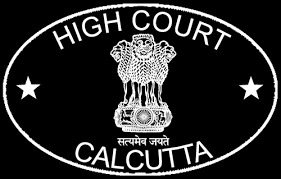Ranjit Singh, J.@mdashDuring Panchayat election held in June 2008, five Panches were elected in Village Ibrahimpur, Block Malerkotla, District Sangrur. The petitioner was elected as Sarpanch out of these Panches. On 15.9.2010, Block Development and Panchayat Officer (for short, "BDPO") convened a meeting u/s 19 of the Punjab Panchayati Raj Act, 1994 (for short, "the Act") for considering no confidence motion against the petitioner. Said notice was served on the petitioner on 20.9.2010 and only two days thereafter, the meeting was fixed for 23.9.2010. In this meeting, four Panches were present, who stated that they are not in agreement with the Sarpanch. Fourth Panch, however, sided with the petitioner. The BDPO did not ask the Panches to vote but stated that three Panches were on the one side and two on the other and, thus, the resolution was passed by 2/3rd majority. The petitioner would urge that three out of five Panches would not constitute 2/3rd majority, which is the requirement to pass a valid no confidence motion against a Sarpanch. The resolution of no confidence motion, which was held passed, thus, is termed as illegal and so liable to be set-aside. The petitioner filed an appeal against this no confidence motion, which was dismissed on 1.11.2010, being not maintainable. Respondent No. 6 had filed a writ petition before this Court to challenge the ordinance deleting Section 19 of the Act. This writ petition was dismissed as infructuous as the ordinance was repealed by an Act during the pendency of the writ petition. The vires of amending Act, deleting Section 19 was thereafter challenged primarily on two counts. It was urged that making amended provision applicable with retrospective effect would be illegal. The retrospective effect of the amended provision was struck down and it was held that the amended provision would be applicable prospectively from the date of amendment i.e. 21.4.2011. Since no confidence motion against the petitioner was passed prior to the date of amendment, the resolution of no confidence motion was being put into operation. The petitioner has, thus, filed the present petition to challenge the resolution.
2. Reply on behalf of respondent Nos. 1 to 4 is filed. It is stated that Sarpanch can be removed from the post by passing no confidence motion. As per the respondents, four Panches were present and three out of them were in favour of no confidence motion and, therefore, the said motion was validly passed by 2/3rd majority of the number of Panches present at the time of passing the no confidence motion.
3. Reply on behalf of respondent Nos. 5 to 7 filed in Court, which is also taken on record.
The short question which arises for consideration is whether the no confidence motion in this case was passed by 2/3rd majority of the Panches or not.
4. Section 19, which regulates the procedure to pass a no confidence motion, reads as under :-
19. No-Confidence motion against Sarpanch.-(1) An application regarding intention to move a motion of no-confidence against a Sarpanch be made to the Block Development and Panchayat Officer by a two-thirds majority of the total number of Panches of the Gram Sabha concerned:
Provided that no such application shall be made unless a period of two years has elapsed from the date on which the Sarpanch assumed his office.
(2) The Block Development and Panchayat Officer shall, within a period of fifteen days of the receipt of application under sub-section (1), convene a meeting of the Gram Sabha by giving seven clear days In notice, for discussing and taking decision on the no-confidence motion.
(3) If the no-confidence motion is carried In the meeting convened under sub-section (2) which shall be presided over by the Block Development and Panchayat Officer or an Officer not below the rank of Social Education and Panchayat Officer authorised by the Block Development and Panchayat Officer In this behalf, by a majority of the members of the Gram Sabha Present and voting concerned, the Sarpanch shall be deemed to have been removed from his office, and a new Sarpanch shall be elected in his place :
Provided that if the no-confidence motion is lost another such motion shall not be moved against that Sarpanch before the expiry of two years from the date of its having been lost."
5. The first issue, which may require consideration is whether the total number of Panches elected and authorized are to be taken in consideration for calculating 2/3rd majority or it is to be so determined on the basis of Panches present at the time of voting. This issue has been fully settled by number of precedents of this Court as well as of different Courts. In CWP No. 16877 of 1999 titled Chaman Lal v. State of Punjab, decided on 12.7.2000, this was the precise question, which arose for determination before the Division Bench of this Court. The submission in this case by the counsel appearing for the petitioner was that expression "two-third members of the committee" appearing in Section 22 of the Punjab Municipal Act referred to existing members of the Council and, thus, the resolution passed in the said case by 6 members out of 9 was being justified. Upon due consideration of this submission and after referring number of precedents, the Division Bench culled out the question which it was called upon to decide. This can be so noticed from the following part of the judgment :-
In the light of above analysis of the relevant provisions, we have to decide whether the expression "two-third of the total number of members or only the existing members.
5. After making reference to number of judgments cited before the Division Bench, the Court finally concluded as under :-
On the basis of above discussion, we hold that the expression occurring in Section 22 "two-third of the members" of the council takes within its fold the number of elected members determined by the State Government as well as members of the Legislative Assembly who become member of the Municipal Council by virtue of their office and it is not confined to the members who are existing on the date of consideration of no-confidence motion.
6. Division Bench of this Court in
7. Reference can also be made to
8. For counting of fraction to determine two-third majority, a reference may be made to order passed by Division Bench of this Court in
9. Similar view was taken in Vijay Kumar Saluja v. The Deputy Commissioner, Karnal and others, 1991 PLJ 635, Jai Chand v. The Haryana State Agricultural Marketing Board and others, 1973 P.L.J. 704 ,
10. The issue that if three out of five members would constitute 2/3rd majority is, thus, no more res-integra. This issue has also been fully settled by number of judgements as mentioned above.
11. In view of the above, no confidence motion passed against the petitioner was not passed by 2/3rd majority of the Panches and, thus, can not be sustained being illegal. The writ petition is accordingly allowed. The impugned no confidence motion, removing the petitioner from the post of Sarpanch is set-aside.

